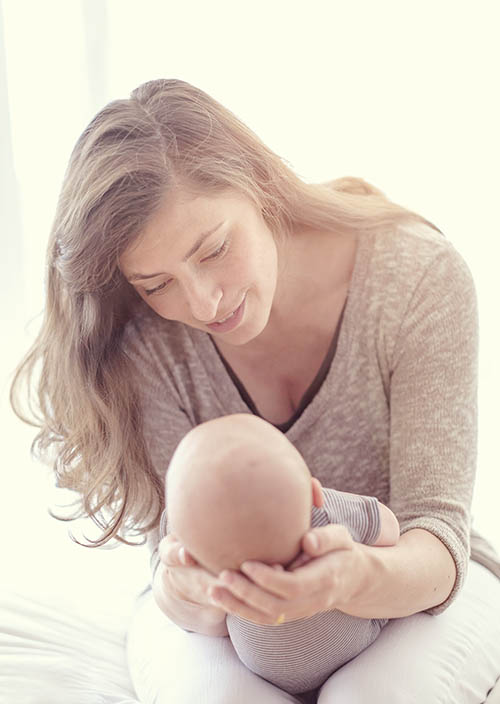Today I did a lifestyle shoot with a mother and two month old baby. I wanted to achieve a natural, candid look to the images that were shot in my studios. We prepared two sets: One was a dimly lit bedroom scene with light (a single 1000 watt tungsten through a large scrim) pouring through a window. The second scene was light and airy, back lit exclusively with window light. I was curious to see how the various Fuji X film profiles would handle these very different lighting situations.
Let's have a look.
A situation like this is very contrasty. I found that the Adobe Standard did the best job of equalizing the highlights with the shadow details but does add a slight punch to the colors. Fuji's Provia-Standard was similar but not to the same extent. It really depends on what you are trying to achieve. The Velvia had the color punch we would expect, but it also enhanced the contrast so all shadow detail was lost. Astia-soft was a nice compromise for a mother/baby theme. It produced a delicate look.
For a more muted and natural color effect the Pro-Neg is the best option with the Hi having a bit more punch than the Standard. I happen to like both of these, but it all boils down to personal taste. For this dimly lit, contrasy scene I found myself relying mostly on the Adobe Standard -- but then, I tend to like having detail in the shadows.
Here is a completely different set, back lit entirely with bright window light and no front fill.
In this brighter, back lit scene I leaned towards the more colorful profiles. The Velvia-Vivid added a bit of color punch that brightened the scene. Provia-Standard kept it looking a lot like what it really was, while the Pro-Neg profiles muted the colors for a much subtler effect. Once again, it all comes down to what you are trying to achieve with the shot.
Being armed with a knowledge of what these profile effects look like in various lighting situations makes the post-processing workflow go a lot quicker.
Below are some more shots from the day with further post-processing enhancements added. All of these images were taken with a Fuji X-T1 and 56mm f/1.2 lens with aperture used towards the open end.
 |
| A shot like this cannot be faked easily. It takes a real mother with her now born baby to achieve the expression, coupled with a good camera with fast focus ability to capture it. |
 |
| The soft bokeh effect of the Fuji 56mm f/1.2 lens concentrates our attention on the babies face while allowing the mother's face to drift softly into an out-of-focus background. |






No comments :
Post a Comment